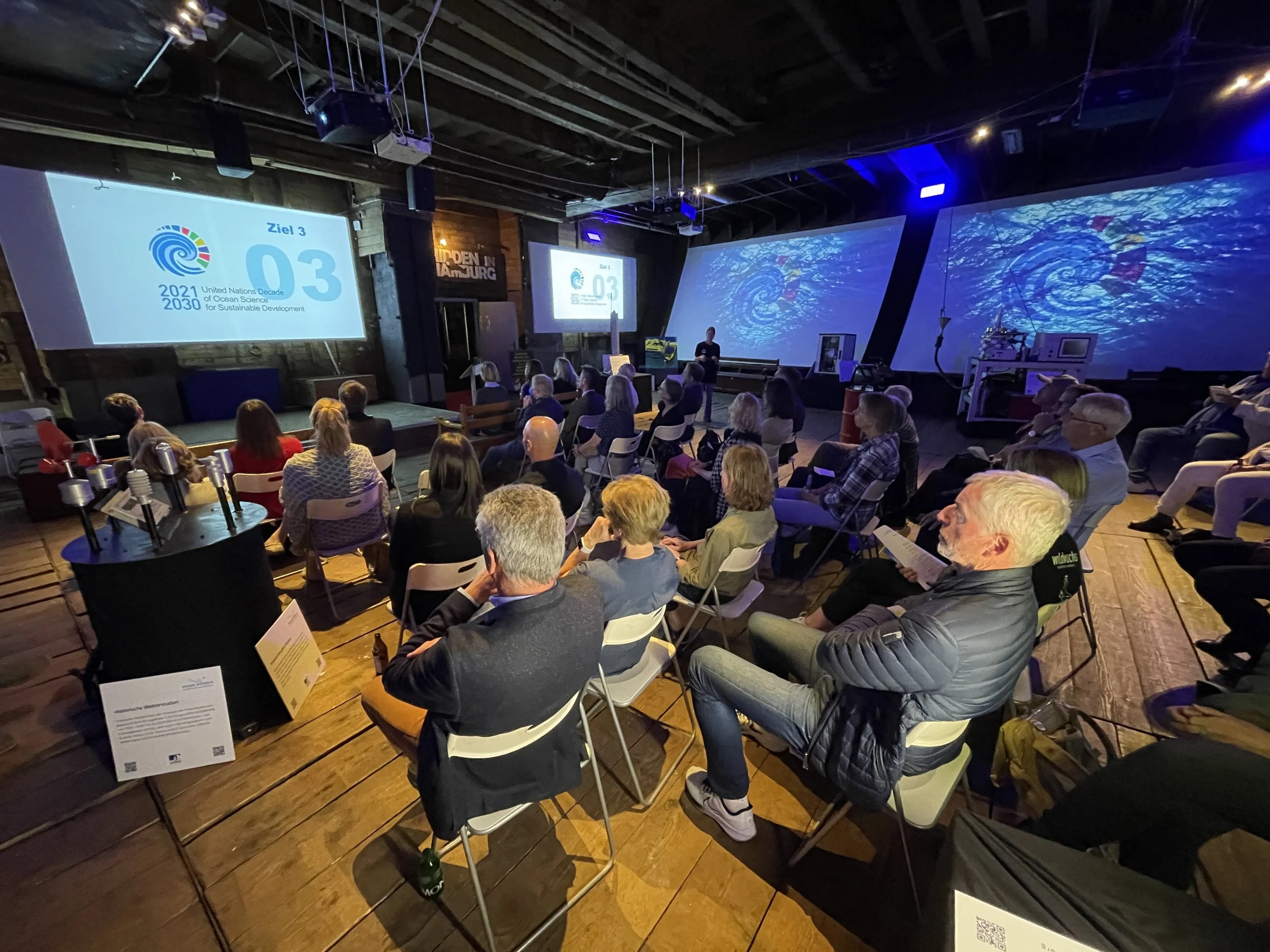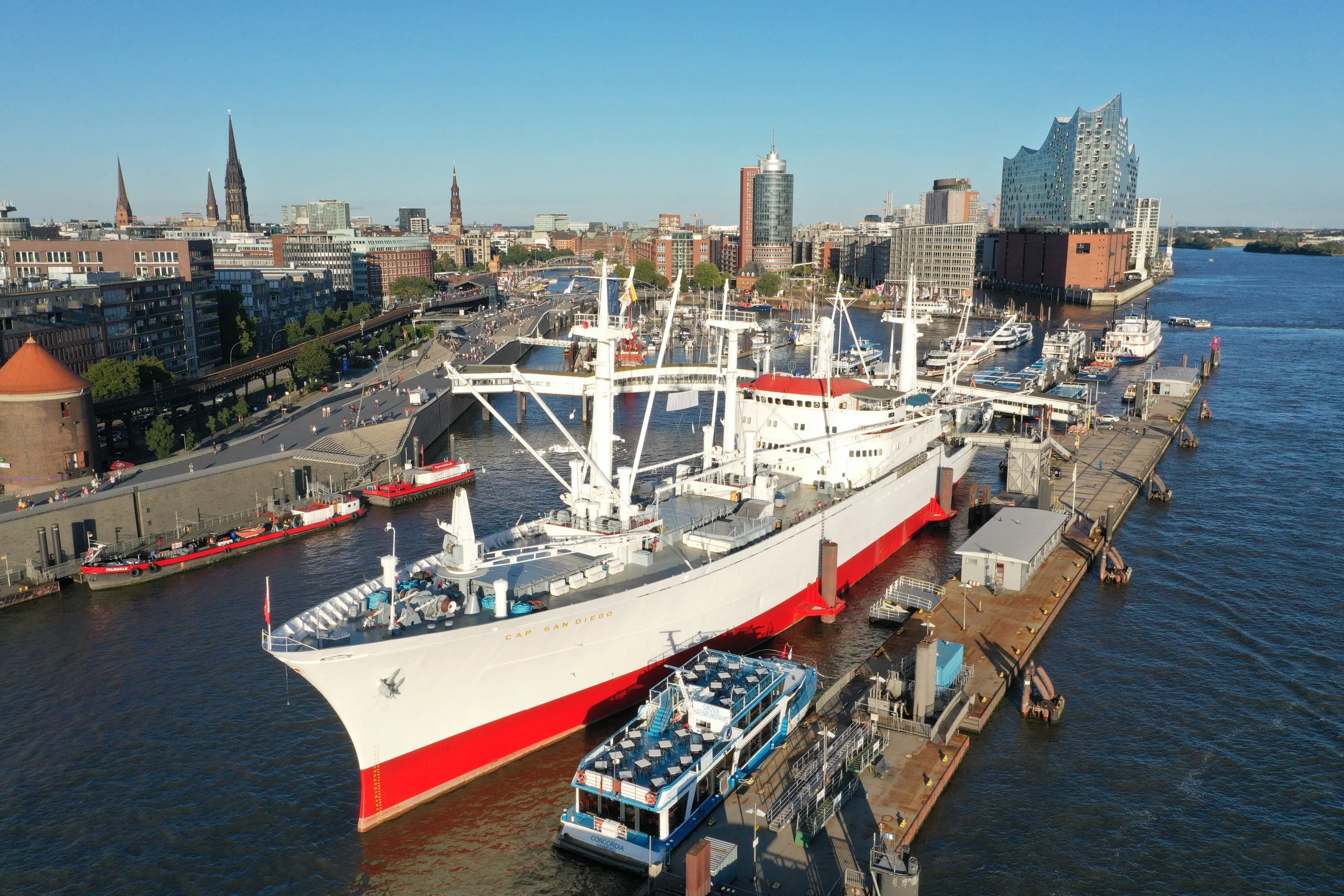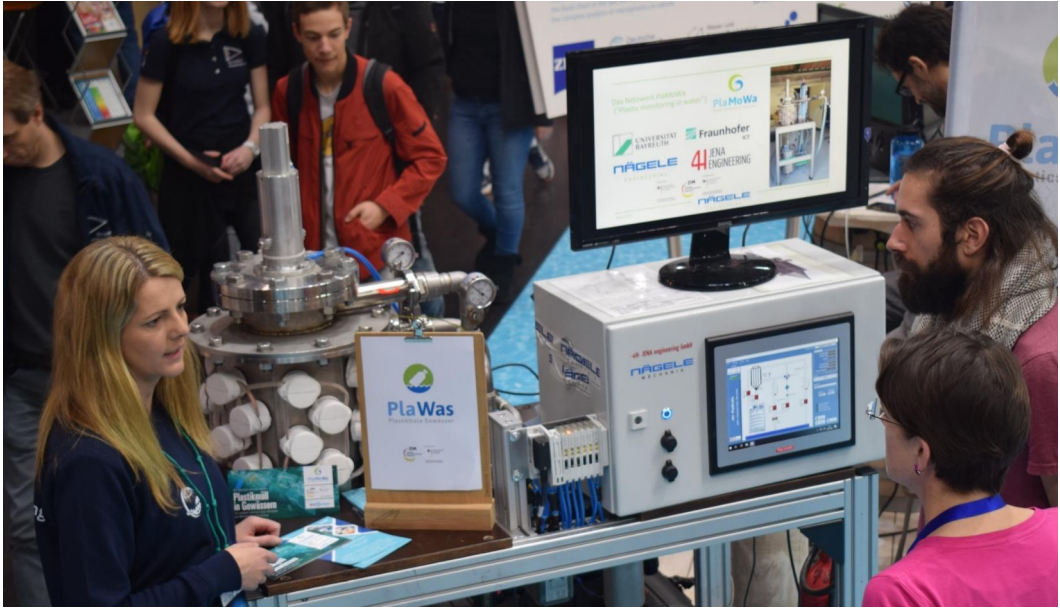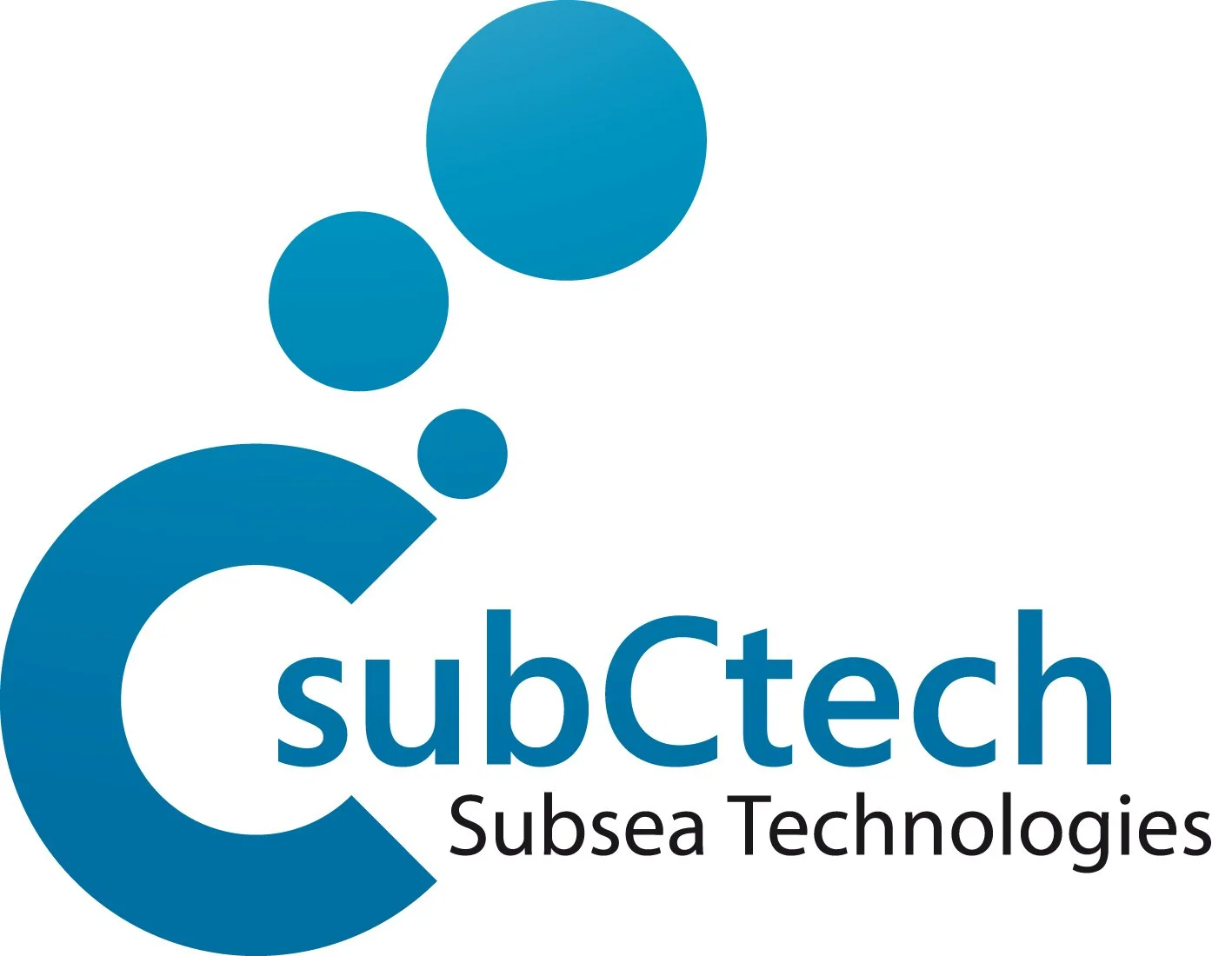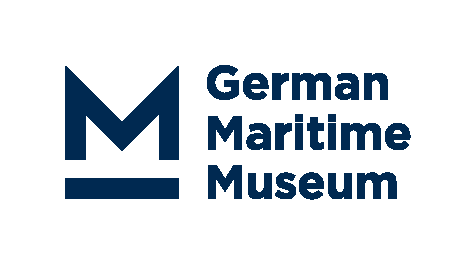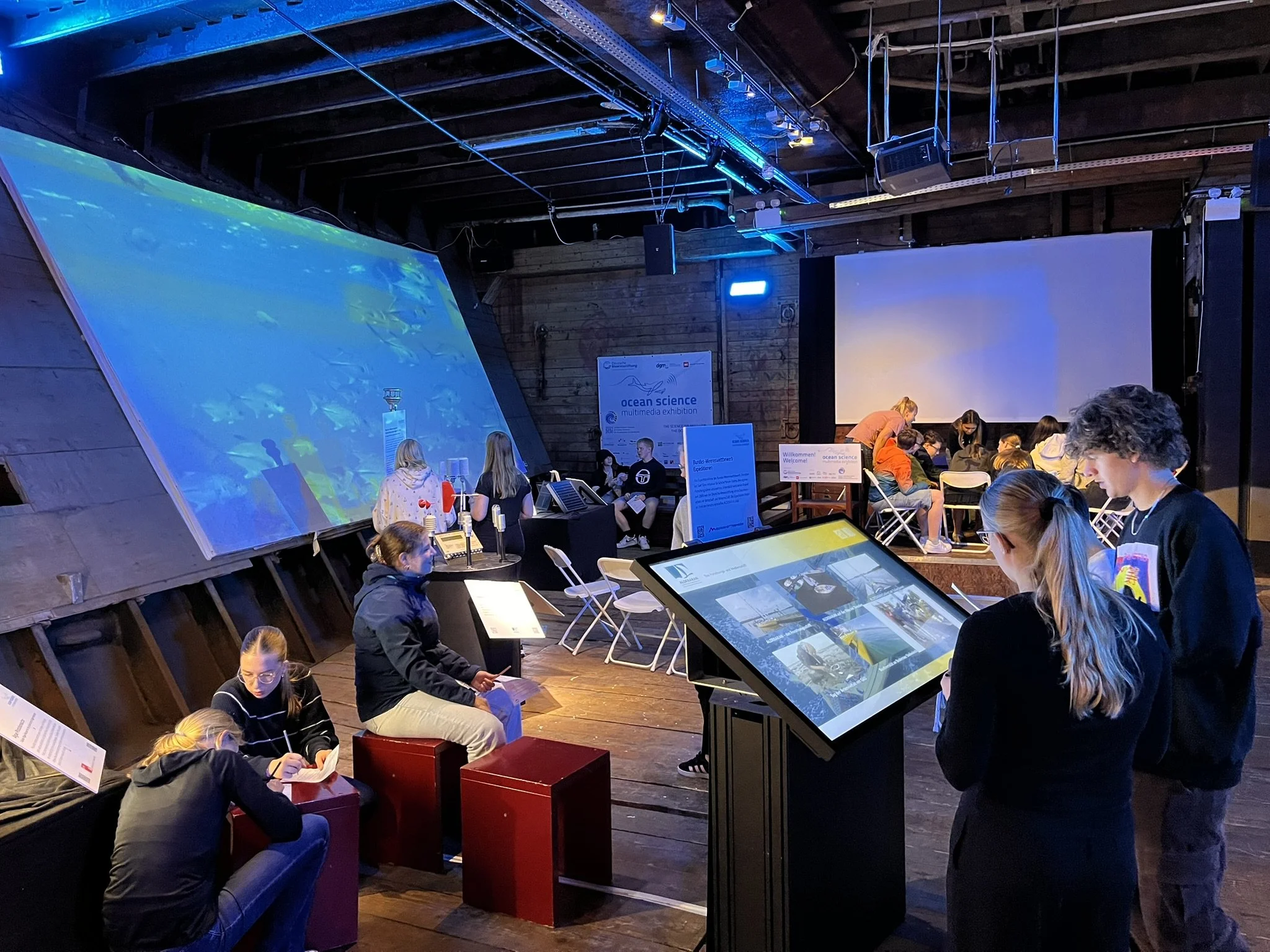
Ocean Science Exhibition
Endorsed as a UN Ocean Decade Contribution
The Foundation’s Ocean Science Multimedia Exhibition on the Cap San Diego in Hamburg offers a place of learning for the general public and particularly for school pupils from the 5th grade and above who are interested in the UN Ocean Decade and the challenges facing our ocean today.
Supported by more than 75 partners and stakeholders, the exhibition was the first - and indeed remains the only exhibition - to be dedicated to the UN Decade of Ocean Science for Sustainable Development in Germany.
The Ocean Decade is a unique opportunity for ocean stakeholders from around the world to come together to share knowledge and foster partnerships needed to support a well-functioning, productive, resilient, sustainable and inspiring ocean. The exhibition aims to visibly support the goals of the Decade, serving as a learning space for all Hamburg schools, as the combination of multimedia installations, exhibits and the possibility of workshops and discussions makes for an attractive extracurricular program.
In addition to two world premieres: the microplastic collector, a project funded by the German Federal Ministry for Economic Affairs and Climate, and the first research diver-guided underwater satellite, the exhibition features an Argo Float, one of the 3,000 state-of-the-art measuring buoys currently deployed on the ocean, and an active algae reactor from the University of Hamburg showing how food and energy can be extracted in future from the ocean. Also on display is one of the first automatic measuring stations for ships, the OceanPack™ from the Kiel-based company SubCtech, which is also used by the professional sailor Boris Herrmann from Hamburg on board his IMOCA racing yacht Malizia Seaexplorer. An historic Swedish sea mine brought up from the Baltic seabed and art made from ghost nets by the Hamburg start-up Bracenet, together with a documentary on the salvage of legacy munition in the Baltic Sea, bring the topic of marine pollution to life. A touch table provides visitors with information on the Ocean Decade and allows them to watch films about the Foundation’s Research at sea competition winners on board the research vessel ALDEBARAN, from which a historical weather station is also on display.
The Cap San Diego, the world's largest seaworthy museum cargo ship now moored at the Überseebrücke in Hamburg, has been a maritime monument and floating hotel since 2003. The exhibition is set up in the freighter's former oil tank and hold and consists of a multimedia show on five large video screens and selected exhibits. The Ocean Science multimedia exhibition will be on display for the entire duration of the Ocean Decade.
This exhibition is powered by a photovoltaic system installed by Meyer Burger on the deck of the Cap San Diego - making it the first exhibition in Hamburg to rely solely on self-generated solar power.
If you would like to visit us, please contact us here.
Discover the exhibits:
-
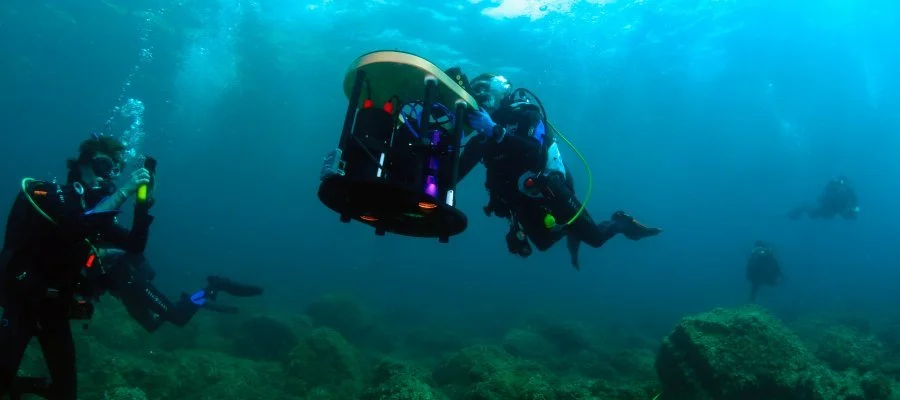
Underwater satellite
Planblue has developed the first underwater satellite that can automatically scan the seabed in great detail. In the future, it will be possible to show how much CO2 is fixed on the seabed (the seabed can embed CO2 20 times more efficiently than on land), how healthy and how species-rich the seabed is, measuring for example pollution, climate change, disease and loss of species.
-

Floating solar power plant
HelioRec has developed a floating solar power plant that transforms unused water surfaces into a home for clean energy generation and can withstand both waves and wind.
-

Argo Float
Since 2000, thousands of autonomous marine robots have been deployed as part of the Argo program to measure temperature and salinity profiles. The buoys drift freely with the ocean currents at a depth of 1,000 m and regularly rise to the surface to transmit measurement data and their position.
photo: Argo Program
-
Ghost nets
Together with the marine conservation organizations Healthy Seas and Ghost Diving, Bracenet‘s divers free reefs and shipwrecks from lost or intentionally sunk fishing nets at depths of over 50 meters. They have now recovered over 773 tons which have been lovingly upcycled by hand in Hamburg and Porto to create a variety of products, from bracelets to dog leads.
-
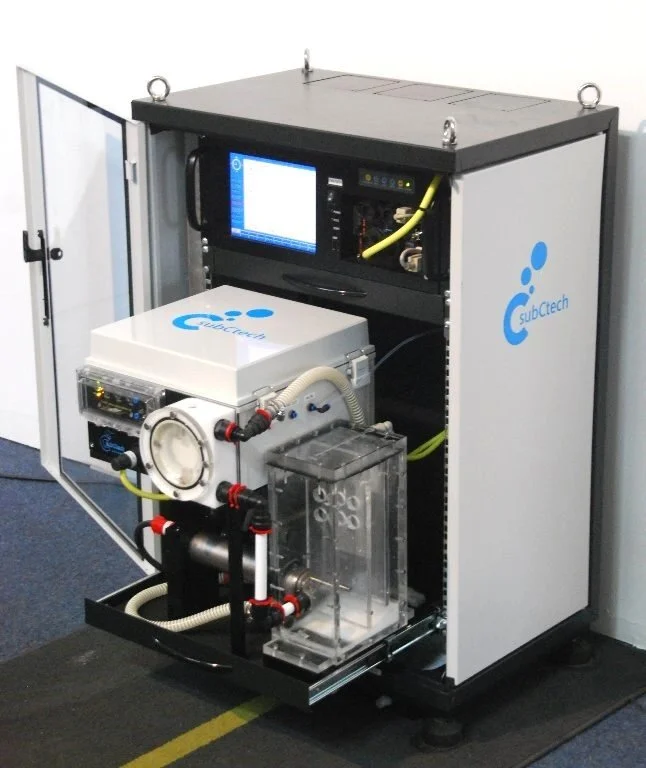
Ocean laboratory
OceanPack™ is a mobile automated laboratory for ships developed by SubCTech. It can perform unattended climate measurements and has integrable sensors for CO2, salinity, temperature, algae species and pH. The data is used as a weather station and for ocean current models as well as for calculating global energy transport. The technology is now so advanced that racing yachts such as Boris Herrmann's Malizia have a miniaturized device on board.
-

Algae photobioreactor
At the University of Hamburg , Professor Dr. Hanelt's research group, which has been working on the ecophysiology of aquatic plants, is developing an algae photobioreactor for the production of algae biomass.
-

Ocean cleanups
From 2026, The SeaCleaners Manta, an ocean-going catamaran, will join the organization's fleet of cleaning vessels, such as the Mobula 8, which collects waste from shallow and inaccessible waters such as mangroves, rivers, canals and port areas.
-
Microplastic sampler
The first and so far probably only automatic microplastic sampler with an ultrasonic pre-filter was developed by a consortium of the companies 4H Jena and Nägele Mechanik in 2018 with funds from the Central Innovation Program for SMEs of the Federal Ministry of Economics. To identify plastic particles in bodies of water, the PlaMoWa consortium is developing a new type of filter unit (filter cascade) that enables the efficient pre-sorting of microplastic particles during sampling in bodies of water.
-

Historical weather station
Historical weather station from the Norwegian company Aandera used on board the sailing research vessel ALDEBARAN from 1992-2005. The ALDEBARAN sails mainly in shallow water and coastal areas, but also in inland waters and rivers. Today, the station has been replaced by an official weather station of the German Weather Service.
-

Touch table
Interactive touch table of the Foundation with films about the Ocean Decade as well as the expeditions of the "Research at Sea" competition and information about the work of the German Ocean Foundation.
-

Plastic pollution
Plastic is everywhere, in our bodies, in the sea, in the environment, it is even used by seabirds to build nests, as shown by this gannet building a nest from plastic parts, provided by the Aquazoo Löbbecke Museum.



